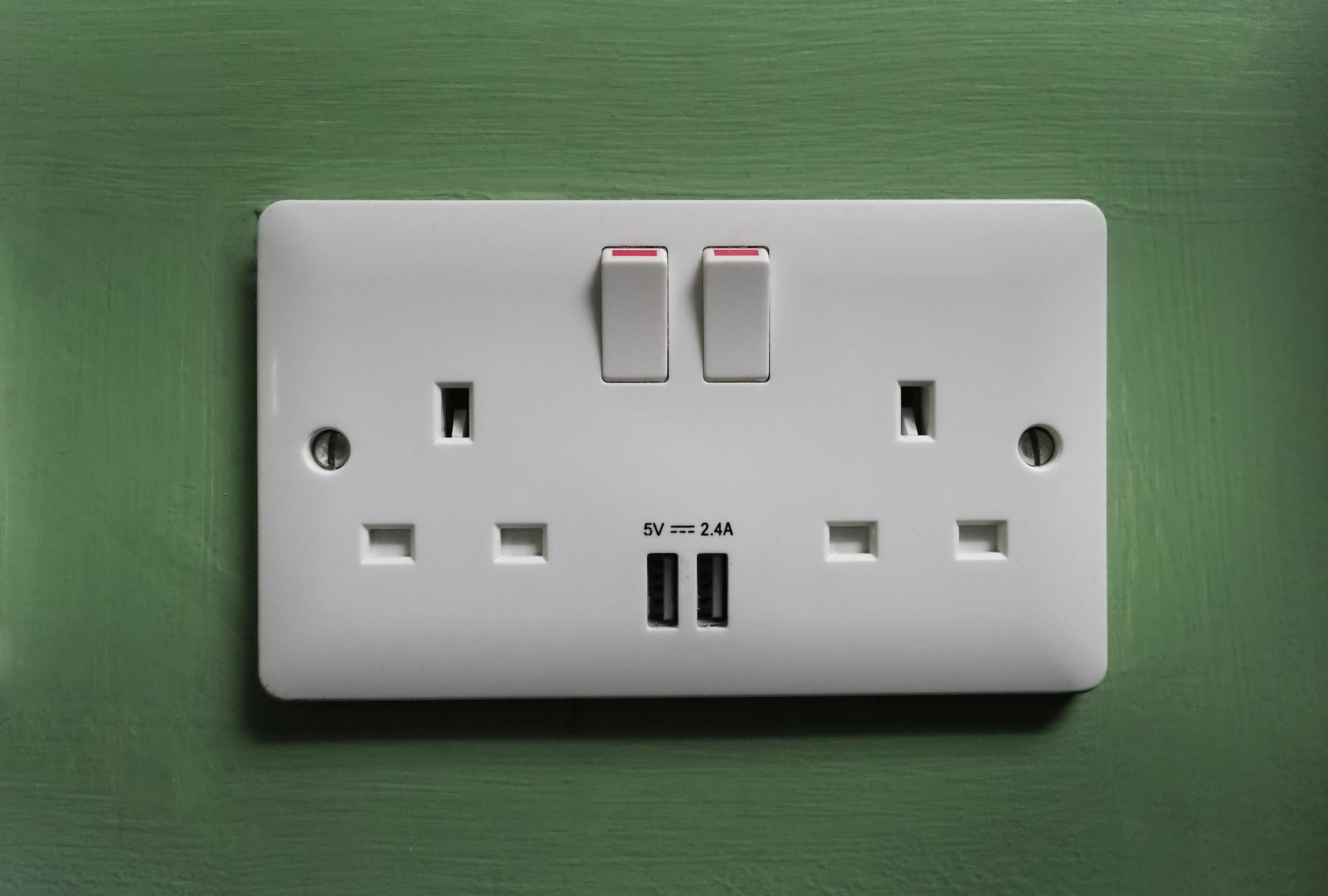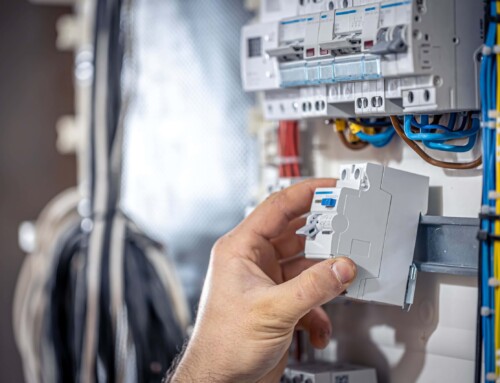Ever wonder why your GFCI outlet keeps tripping? These safety devices are lifesavers in your home, stopping electricity when there’s a potential shock hazard. But constant tripping can be annoying and point to a bigger problem. Let’s explore what might be causing those trips and how to get your outlets working smoothly again.
Why Does GFCI Keep Tripping
It’s normal for your GFCI to trip occasionally as it’s a sign that it’s doing its job by protecting against electrical issues. However, if it’s tripping frequently, there might be a problem you need to address. Here are some common reasons why your GFCI keeps tripping and what you can do about it. If these steps don’t work, it’s best to call a professional electrician for help.
-
Ground Fault:
One common reason for GFCI tripping is a ground fault. GFCI outlets are designed to detect even small irregularities in electrical currents for added safety. Ground faults occur when unintended currents flow to the earth, often due to contact between a hot wire and the ground or water. The GFCI’s job is to recognize these irregularities and shut off power to prevent potential hazards.
Solution: Start by unplugging all appliances from the GFCI circuit. If the GFCI resets successfully without any appliances plugged in, the issue may be with the outlet itself and may need to be replaced by a professional electrician. However, if the trip happens when a specific appliance is plugged in, it’s likely that the appliance has a fault and should be inspected or repaired by a professional. Always prioritize safety and avoid attempting repairs on faulty appliances yourself.’
-
Moisture Exposure
Moisture exposure, particularly in outdoor receptacles and those near bathrooms, is a common issue. If moisture accumulates in a power outlet box, it can create a ground fault, providing an alternate path for electrical current.
Visible water splashes are easy to notice, but condensation in humid areas can also trigger safety mechanisms in outlets. Moisture can cause a tingling sensation when touching metal prongs, indicating a potential risk of electric shock.
Tripped circuit breakers show that Ground Fault Circuit Interrupters (GFCIs) are working properly. In cases of excess moisture, it’s important to disconnect the device and let it dry thoroughly before using it again. Prioritize safety by wearing rubber gloves and shoes and ensuring the area is completely dry before addressing the issue.
Solution: Check for visible signs of water damage around the outlet. For minor issues like water splashes, allow the area to dry naturally with good ventilation or use fans to speed up the process. Persistent moisture or visible damage should prompt refraining from using the outlet and seeking professional assistance from a licensed electrician for inspection and repair.
-
Circuit Overload
An electrical circuit gets overloaded when there are too many devices plugged into it, pushing it beyond its safe capacity. For instance, a regular GFCI plug can handle around 15 to 20 amps of current. But if an appliance or device draws more power than that, the GFCI will trip to prevent any potential dangers.
Circuit overloads can happen due to various reasons, like faulty appliances, worn-out wiring, or using heavy-duty electrical tools.
To troubleshoot circuit tripping issues:
- Unplug all devices from the outlets.
- Reset the GFCI and check if it trips again after a few minutes. If it doesn’t, the problem might be with the devices you had plugged in. If it does trip, there might be other underlying issues.
- Gradually reconnect the devices and monitor if the circuit trips again. If it does, try reducing the number of devices connected to prevent further tripping.
-
Electrical Fault
If your GFCI outlet keeps tripping, it might signal underlying electrical faults, possibly stemming from faulty wiring in your home. Other outlets sharing the same circuit could also contribute to the issue, especially if they weren’t part of the original wiring setup. In such cases, it’s best to reach out to a qualified electrician for assistance in diagnosing and resolving the problem safely.
Solution: When dealing with electrical issues, it’s crucial to seek professional help if standard troubleshooting methods don’t yield results. Calling a licensed electrician ensures that the fault is accurately diagnosed and repaired, safeguarding your home’s electrical system. Attempting electrical repairs without proper expertise can pose risks to your safety and should be avoided.
-
Malfunctioning GFCI Outlet
If resetting the GFCI outlet doesn’t solve the problem and tripping persists, it may indicate a malfunction within the outlet itself. Over time, the internal circuitry of GFCI outlets can become less responsive, leading to operational issues.
Solution: When faced with a faulty GFCI outlet, replacement is often the most effective solution, particularly if the outlet is older than its typical lifespan of 15 to 20 years. It’s advisable to engage a certified electrician to perform the replacement in accordance with safety standards. This ensures the safe installation of the new outlet and minimizes the risk of electrical hazards.
When to Call an Electrician?
If you’ve gone through troubleshooting steps and your GFCI keeps tripping, it’s best to reach out to a licensed electrician. This is especially important if you suspect there might be a wiring issue, as it could potentially lead to a fire. Similarly, if you notice any signs of moisture damage beyond a basic check, like cracks in the outlet or discoloration nearby, it’s safer to let a professional handle it. An experienced electrician can accurately diagnose the problem and make any necessary repairs safely, giving you peace of mind and ensuring your home remains free from electrical hazards.
FAQ’s
-
What causes GFCI to trip?
Your GFCI can trip due to a ground fault (leakage of electricity), moisture exposure, circuit overload, a faulty appliance, or a worn-out GFCI itself.
-
How to stop a refrigerator from tripping a GFCI outlet?
Make sure your fridge is in good condition. Plug it into a regular outlet on a separate circuit if possible. Otherwise, consult an electrician to adjust the GFCI or replace it with a standard outlet for the fridge.
-
Will a GFCI trip if overloaded?
GFCIs directly detect ground faults, not overload. However, too many appliances on the circuit can trip the GFCI to prevent overheating.
-
How do I find a tripped GFCI?
Look for “Test” and “Reset” buttons on outlets in bathrooms, kitchens, garages, and outdoors. Press the “Reset” button. If it doesn’t work, check your breaker panel for tripped breakers and reset them. If problems persist, call an electrician.

D&F Liquidators has been serving the electrical construction materials needs for more than 30 years. It is an international clearinghouse, with 180,000 square facility located in Hayward, California. It keeps an extensive inventory of electrical connectors, conduit fitting, circuit breakers, junction boxes, wire cable, safety switches etc. It procures its electrical materials supplies from top-notch companies across the globe. The Company also keeps an extensive inventory of electrical explosion proof products and modern electrical lighting solutions. As it buys materials in bulk, D&F is in a unique position to offer a competitive pricing structure. Besides, it is able to meet the most discerning demands and ship material on the same day.






